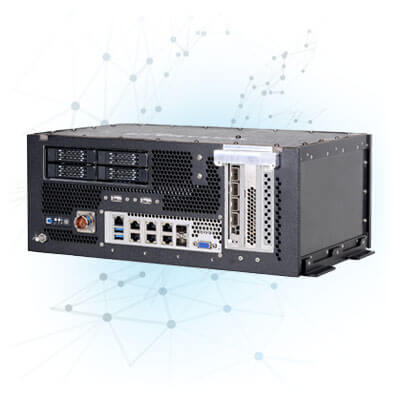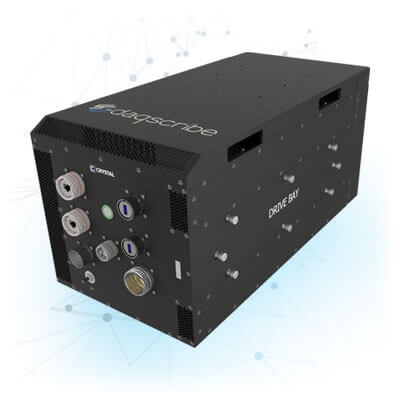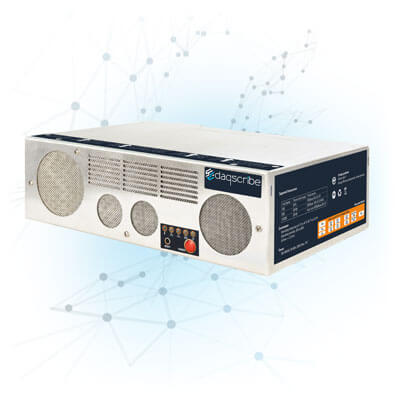Small Form-Factor Pluggable (SFP) Transceiver
A compact, hot-pluggable network interface module used for both telecommunication and data communications applications. It interfaces a network device motherboard (for a switch, router, media converter, or similar device) to a fiber optic or copper networking cable.
SFP+
An enhanced version of the SFP that supports data rates up to 10 Gbps. SFP+ is a more advanced module and is backward compatible with standard SFP modules.
Quad Small Form-Factor Pluggable (QSFP)
A compact, hot-pluggable transceiver used for data communications. It provides four channels of data in one pluggable interface. Each channel can transfer data at 10 Gbps, providing a total data rate of 40 Gbps.
QSFP+
An evolution of the QSFP that can support a higher data rate of 14 Gbps per channel, providing a total data rate of 56 Gbps.
SFP28
A standard for a new generation of optical transceivers that support data rates up to 25 Gbps. It is used for both 25 GbE and other communications standards that require a higher data rate than 10 Gbps.
QSFP28
Like the SFP28, but designed for 100 Gbps total data rate, with each of the four channels supporting a speed of 25 Gbps.
1GbE (1 Gigabit Ethernet)
A term for Ethernet networks that transmit Ethernet frames at a rate of 1 gigabit per second.
1GbE-link
A single connection in a network that operates at 1 Gbps speed.
10GbE (10 Gigabit Ethernet)
A version of Ethernet with a nominal data rate of 10 Gbps, ten times faster than 1GbE.
10GbE-link
A single connection in a network that operates at 10 Gbps speed.
25GbE (25 Gigabit Ethernet)
An Ethernet standard that supports 25 Gbps networking speed.
25GbE-link
A single network link that provides a 25 Gbps connection speed.
40GbE (40 Gigabit Ethernet)
An Ethernet standard that supports 40 Gbps networking speed.
40GbE-link
A single network link that provides a 40 Gbps connection speed.
100GbE (100 Gigabit Ethernet)
An Ethernet standard that supports 100 Gbps networking speed.
100GbE-link
A single network link that provides a 100 Gbps connection speed.
Concatenated Links (xGbE, yGbE, zGbE)
This refers to the combination of multiple Ethernet links to increase the total data throughput. For example, “10GbE, 25GbE, 40GBE” indicates a setup where these different speeds of Ethernet connections are used together.
Megabytes per second (MB/s)
A unit of data transfer rate equal to 8 megabits per second or 1 million bytes per second. Commonly used to express data transfer rates for storage devices and real-time data streaming.
Gigabytes per second (GB/s)
A unit of data transfer rate equal to 8 gigabits per second or 1 billion bytes per second. This term is used for very high-speed data transfer rates, such as those in high-performance computing and large data center operations.
Kilobits per second (kbps)
A unit of data transfer rate equal to 1,000 bits per second. Often used to measure the speed of lower bandwidth internet connections.
Megabits per second (Mbps)
A unit of data transfer rate equal to 1 million bits per second. Commonly used to measure internet connection speeds.
Gigabits per second (Gbps)
A unit of data transfer rate equal to 1 billion bits per second. This metric is often used to describe high-speed network connections, such as those used in enterprise networking environments.
Terabits per second (Tbps)
A unit of data transfer rate equal to 1 trillion bits per second. This is a high data transfer measurement, typically used in the context of backbone internet networks and large-scale data transmission.
Network Protocol
A set of rules and conventions for sending and receiving data across a network. Protocols ensure that data is transmitted in a reliable and understood format between devices.
Protocol
In computing, a protocol is a specific set of rules for formatting and processing data. This can be a network protocol or a protocol used in other contexts, like file transfer or messaging.
Layer-2
This refers to the data link layer of the OSI model, responsible for node-to-node data transfer, frame detection, media access control, and error checking.
Network Traffic Capture and Analysis Protocol (NTCAP)
This might be a less common term and might not refer to a specific standard protocol. It could be a typo or misrepresentation of “Network Time Protocol” or a specific proprietary system.
Packet Capture (PCAP)
A data-gathering technique used to intercept and log traffic that passes over a digital network. PCAP is the file format used to store this captured data.
Open Systems Interconnection Model (OSI model)
A conceptual model that characterizes and standardizes the functions of a telecommunication or computing system without regard to their underlying internal structure and technology. It has seven layers.
Transmission Control Protocol (TCP)
A core protocol of the Internet protocol suite that ensures the reliable, ordered, and error-checked delivery of a stream of data between applications running on hosts communicating via an IP network.
IP Unicast
A communication between a single sender and a single receiver over an IP network. The term is used in contrast to multicast, where a single message is sent to multiple recipients.
IP Multicast
A method for sending internet protocol (IP) datagrams to a group of interested receivers in a single transmission. It is used for streaming media and other network services that reach multiple destinations simultaneously.
Local Area Network (LAN)
A network that connects computers within a limited area such as a residence, school, laboratory, or office building, using network media.
Physical Layer (PHY)
The first and lowest layer of the OSI model. It defines the electrical and physical specifications for devices. This includes the layout of pins, voltages, cable specifications, hubs, repeaters, network adapters, and more.
Media Access Control (MAC)
A network technology that provides unique identification and access control for computers on an Internet Protocol (IP) network. The MAC address is a hardware identification number that uniquely identifies each device on a network.
Data-rate
The speed at which data is transmitted from one device to another, measured in bits per second (bps). Higher data rates allow more data to be transferred in a set amount of time.
Packet drop
A situation where one or more packets of data travelling across a computer network fail to reach their destination. Packet drop is typically caused by network congestion.
Packet loss
The failure of one or more transmitted packets to arrive at their destination. Packet loss is measured as a percentage of packets lost with respect to packets sent and is an important metric in network performance.
Checksum
A value used to verify the integrity of a file or a data transfer. In networking, it is typically used to check the data in a packet or frame against errors during transmission.
Bit-error-rate (BER)
The percentage of bits that have errors relative to the total number of bits received in a transmission, used as a measure of the quality of a communications link.
Packet Transmit (TX)
The action of sending a packet of data across a network from a source to a destination.
Packet Receive (RX)
The action of receiving a packet of data from a network by the destination device.
Digital Signal Processing (DSP)
The use of digital processing (like by a computer or a specialized DSP chip) to perform a wide range of signal processing operations. DSP is used in a wide range of applications from audio and speech processing, radar, sonar, sensors, and consumer electronics, to communications systems, among others.
SFP (Small Form-Factor Pluggable)
A compact, hot-pluggable transceiver used for telecommunications and data communications applications. It is designed to support SONET, Gigabit Ethernet, Fibre Channel, and other communications standards.
Redundant Array of Independent Disks (RAID) 0
A storage technology that combines multiple disk drive components into a single logical unit for data redundancy and performance improvement. RAID 0 specifically refers to a RAID configuration without redundancy that focuses on improving performance by spreading data across multiple drives.
Transceiver module
A removable or plug-in module that contains both a transmitter and a receiver. These are commonly used in fiber optic and wireless communications.
Transceiver cage
A part of networking devices where transceiver modules are inserted. It typically provides physical support for the modules and may include electrical connections.
Internet Protocol (IP)
The principal communications protocol in the Internet protocol suite for relaying datagrams across network boundaries. Its routing function enables internetworking and establishes the Internet.




